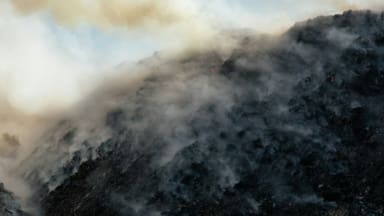
Published in Environmental Letters, scientists warn of the threat of escalating methane emissions, citing that the current trend “cannot continue if we are to maintain a habitable climate”. Despite efforts to reduce methane, total emissions have risen by 20% (61 million tons) over the past two decades.
Methane (CH4) is the second most important anthropogenic greenhouse gas after carbon dioxide and has contributed to 0.5 °C of warming in the 2010s (relative to the late 1800s). According to the scientists, methane has caused “two-thirds as much warming as CO2 (IPCC 2021)” and is far more potent than CO2 because methane traps about 30 times more heat than carbon dioxide over a 100-year time frame.
Worryingly, Methane is rising faster in relative terms than any major greenhouse gas. The data reveals that atmospheric methane levels are now more than 2.6 times higher than pre-industrial levels – now estimated to be at its highest level in at least 800,000 years. The scientists warn that this level of emissions could lead to global warming of more than 3 degrees Celsius by the end of the century. “Only the European Union and possibly Australia appear to have decreased methane emissions from human activities over the past two decades. The largest regional increases have come from China and southeast Asia.”
According to the Global Methane Budget (GMB), the largest emission growth came from expanding landfills, livestock production, increased coal mining and ever increasing consumption of natural gas. Scientists also accounted for the growing influence of human activities from wetlands, lakes, and rivers – previously considered as natural. Human-made reservoirs apparently contribute an estimated 30 million tons of methane annually, because the submerged organic material decays and releases the gas.
Animal agriculture, particularly beef and dairy, is cited as the source of a third of human-caused methane. The approximate 1.5 billion cows on the earth, generate vast amounts of methane as they digest. Despite the myriad of pledges, methane from livestock increased 16% from 2000 to 2020. ESG Investor reported last week, that over 100 civil society organisations around the world, have called on major US banks to halt their financing of industrial livestock production. Banks such as Bank of America, Citigroup and JP Morgan were targeted in the letter, which highlighted the role of banks in exacerbating the climate crisis through their support of meat, dairy and feed corporations – including JBS, Tyson Foods, Cargill and Nestlé. Global banks have reportedly provided over US$615 billion in credit to this sector since the Paris Agreement. Demands on the banks included, halting new financing, requiring clients to disclose and adhere to verified climate targets, and addressing the broader social and environmental harms caused by the industry.
The fossil fuel industry accounts for a smaller share of methane edition than in 2000, but emissions from coal mines, oil wells and gas pipelines have seen significant increases.
Landfill emissions and role for horticulture
Emissions from landfills however, grew even more – by 25% which accounts for 20% of all human-produced methane.
As an industry, horticulture can help encourage and promote household composting to reduce what goes to landfill, lowering greenhouse gases by preventing methane emissions through aerobic decomposition and improving carbon sequestration in the soil. According to a study in the Nature journal Scientific Reports, composting food scraps results in 38% to 84% fewer greenhouse gas emissions than sending it off to landfills. Unlike landfills, compost heaps are watered and turned, which aerates the decomposing waste and thus prevents bacteria from churning out as much methane.
There are a multitude of (modular) options for regular composting garden and kitchen waste. Cooked food waste can also be domestically composted by means of Hotbins, Bokashi bins, the Green Johanna (type) composters, compost wormeries etc – all of which produce nutrient rich compost. Councils in England have started weekly food waste collections, but home composting remains the most environmentally-friendly way of recycling kitchen food waste with the added bonus of free, unpackaged and directly accessible, compost for the garden.

